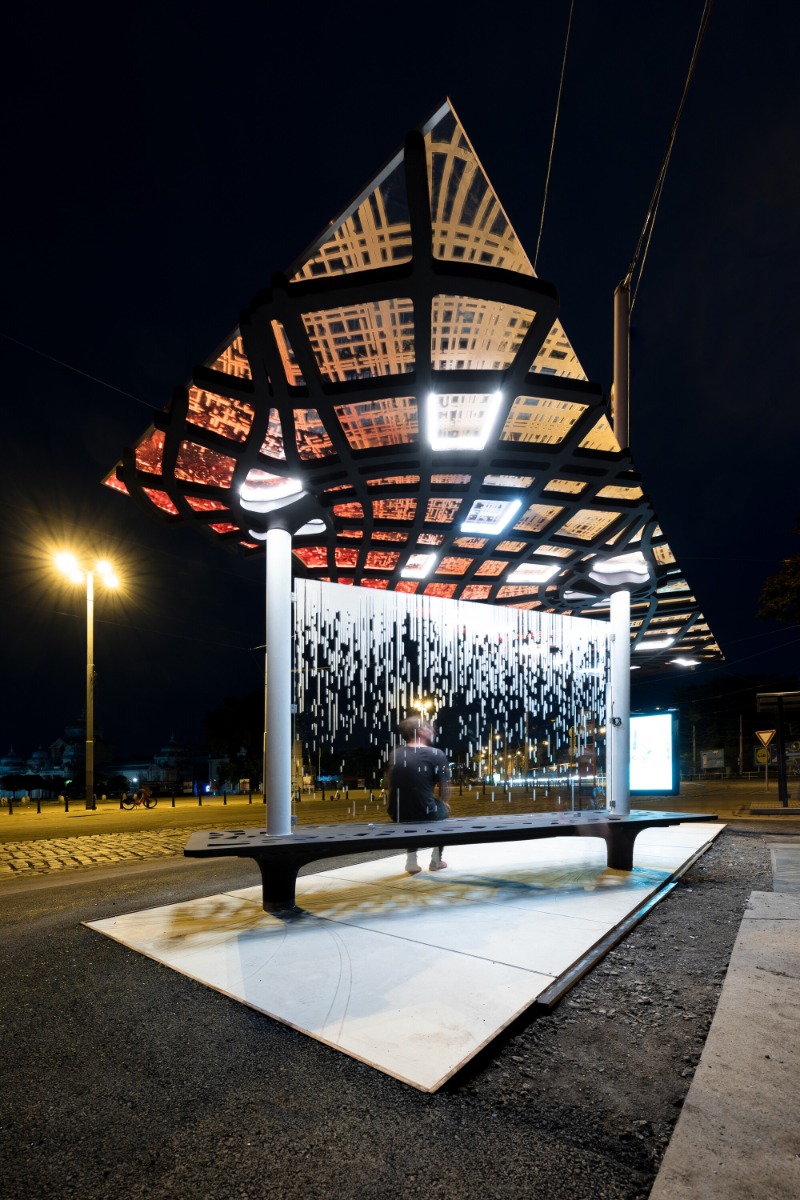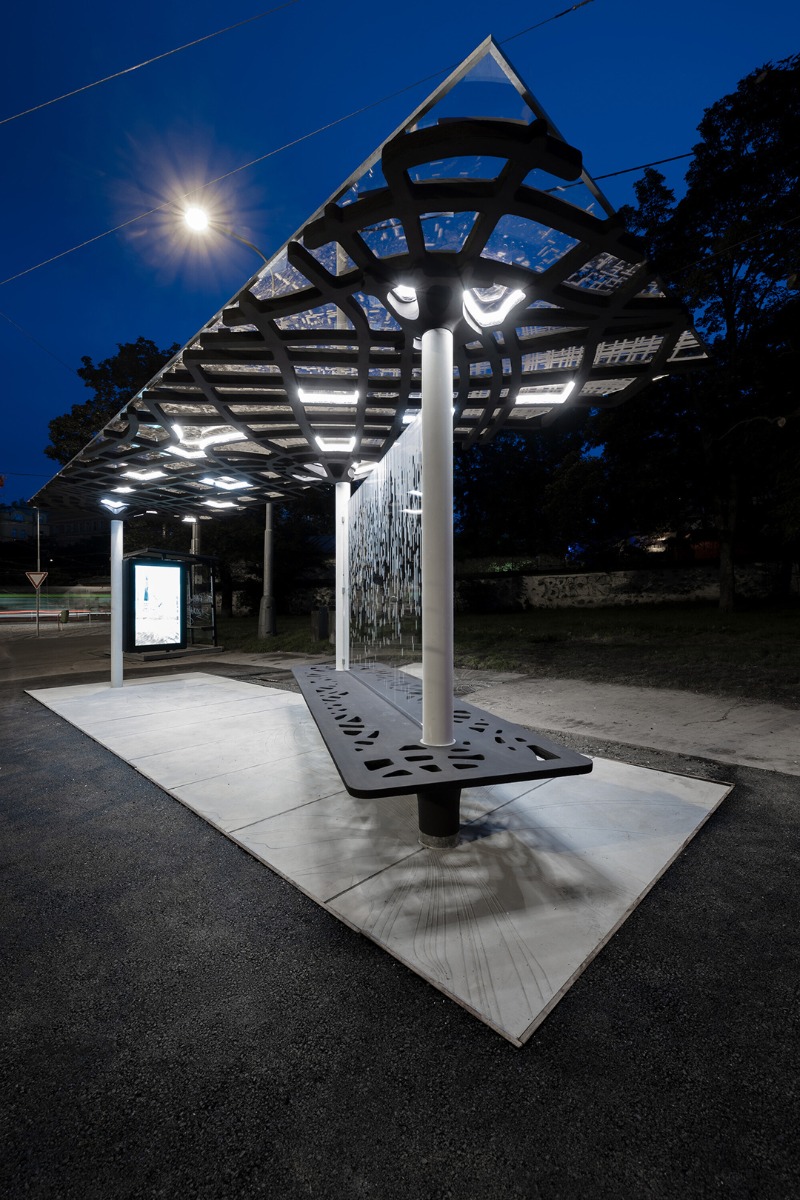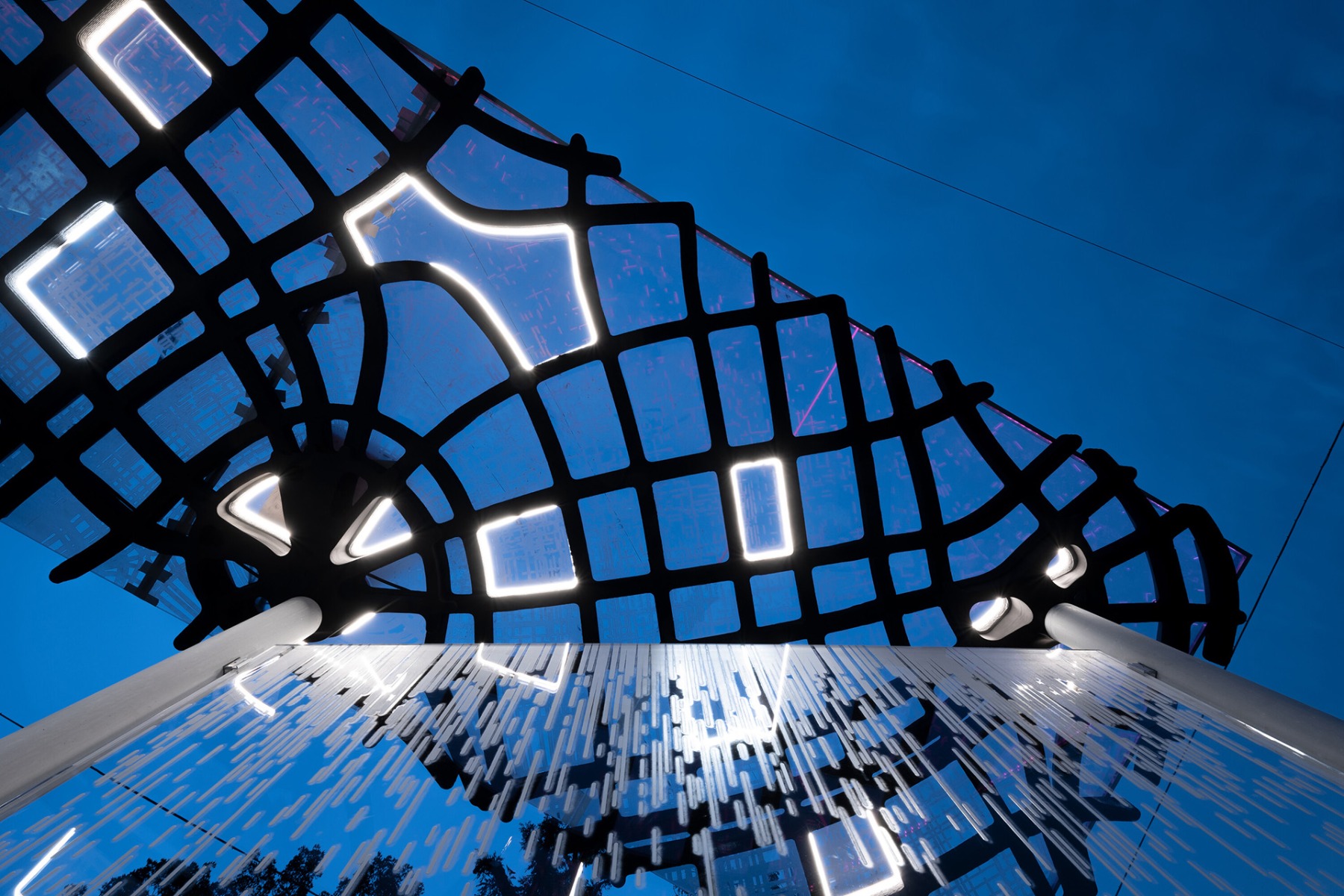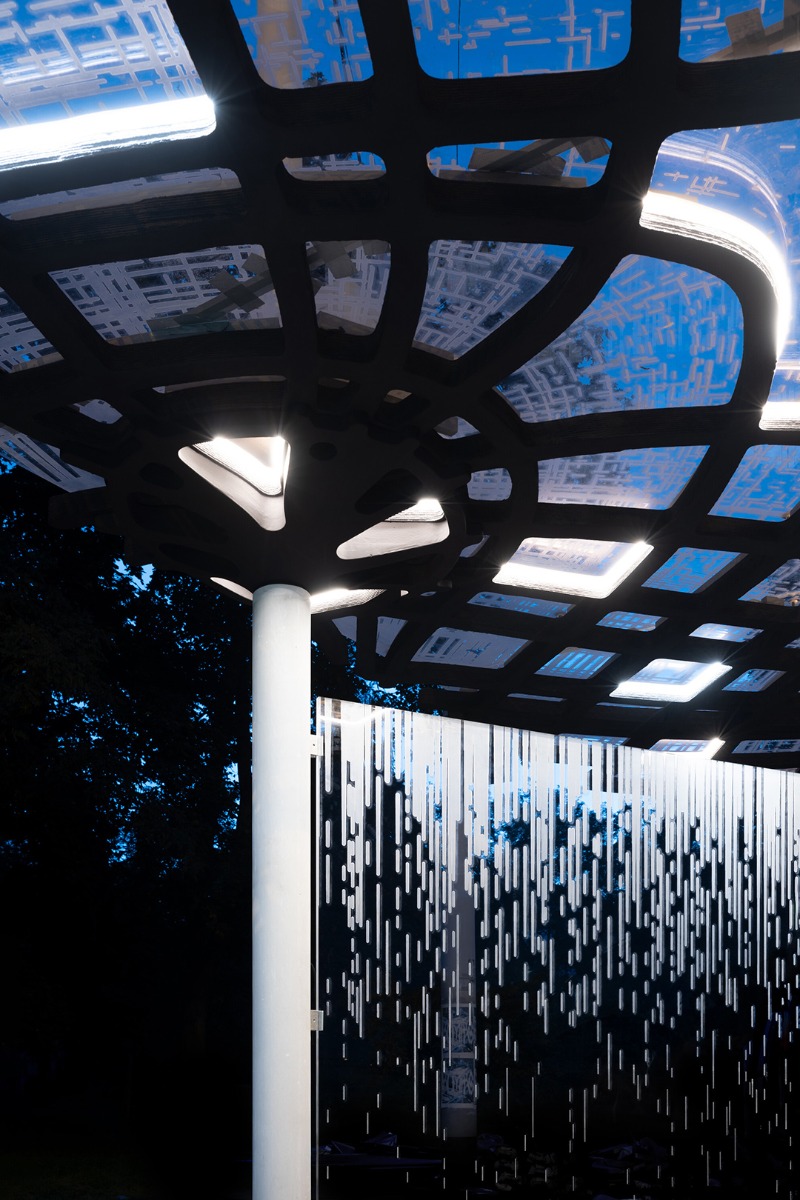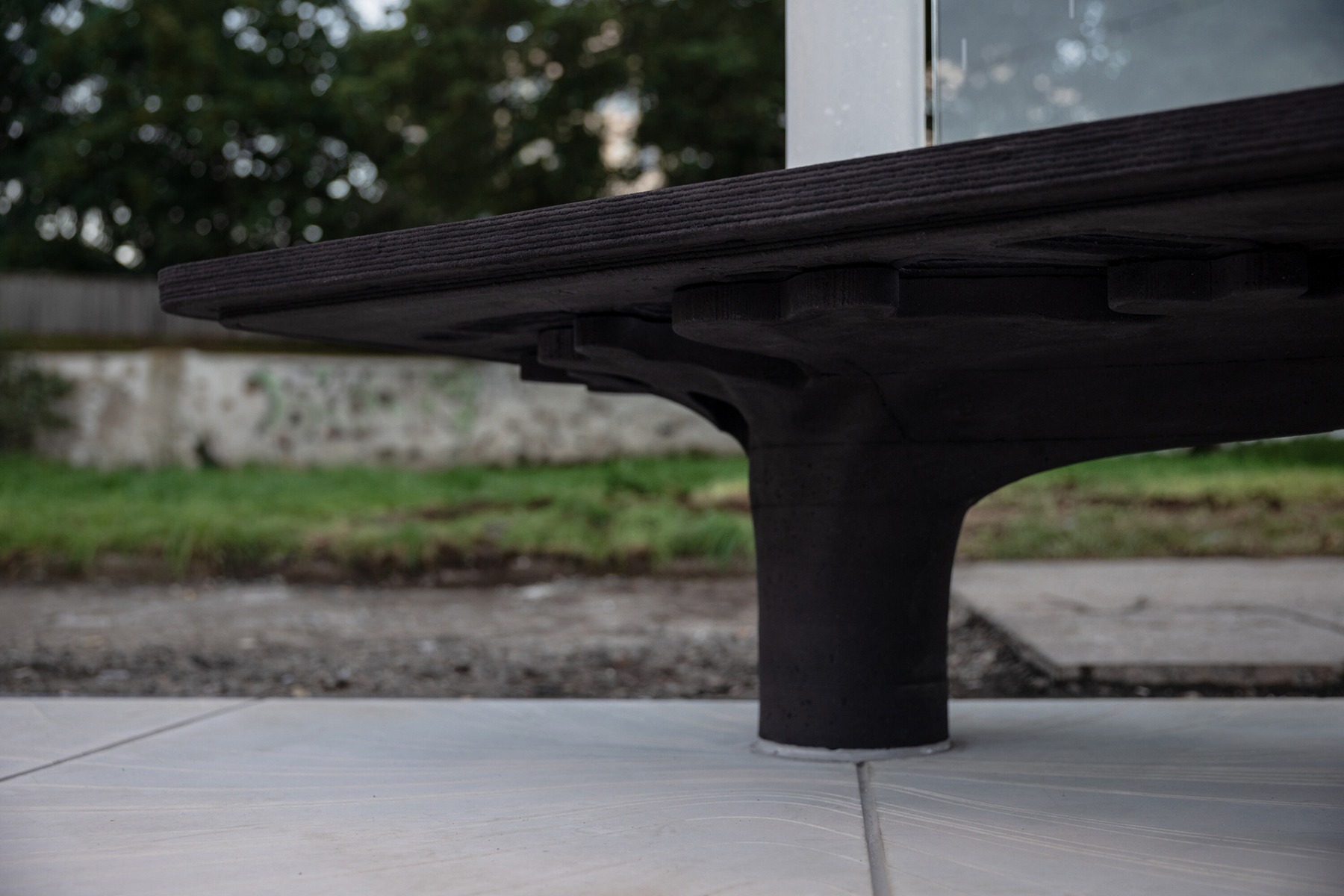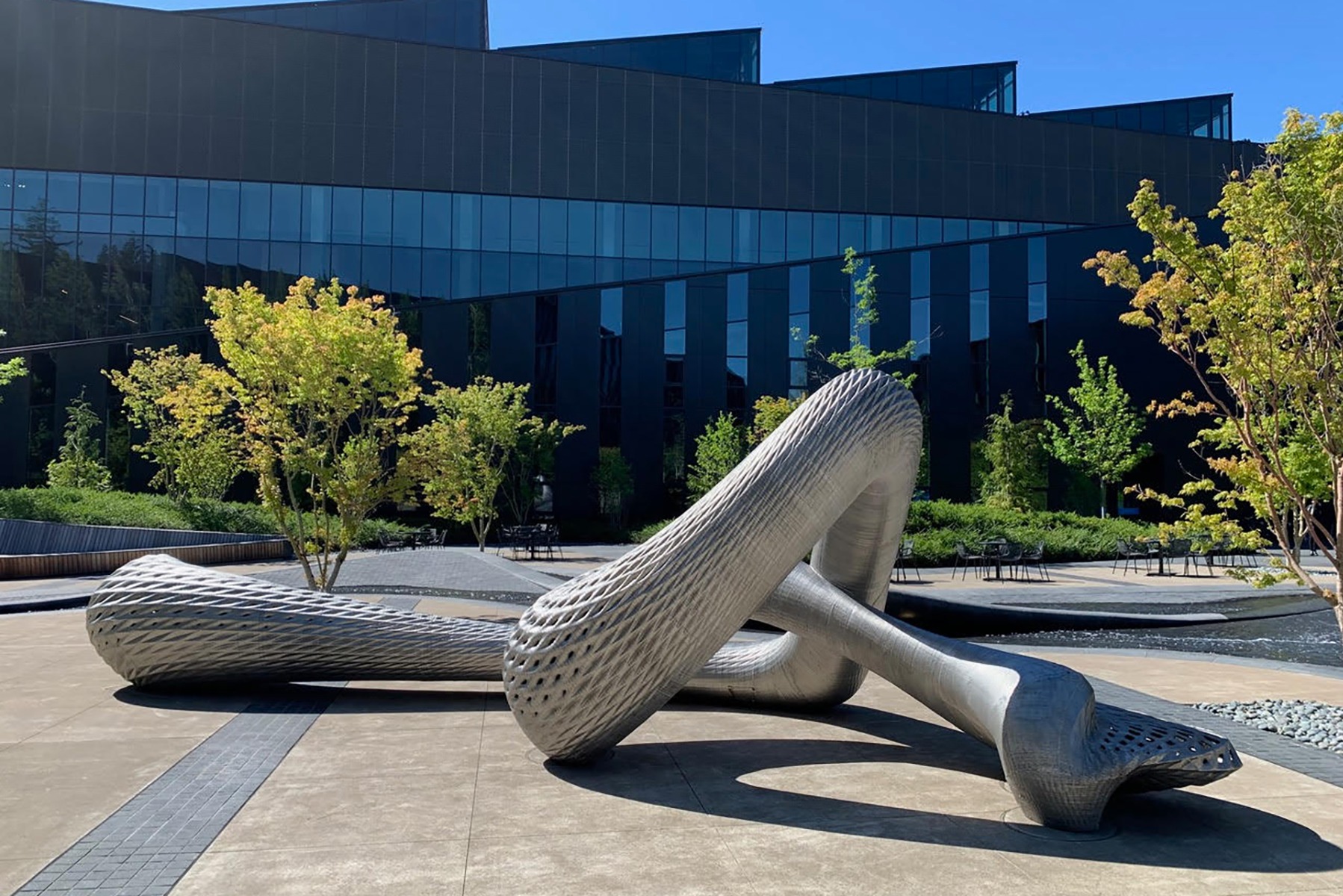Technology of the future
Tram Stop in Prague

© Tomáš Hejzlar
Lorem Ipsum: Zwischenüberschrift
In the Czech Republic, So Concrete have developed the first tram stop of UHP concrete made using 3D robot printing.


© Tomáš Hejzlar
A light network
For the new Výstaviště tram stop in the Prague 7 (Holešovice) district, Czech company So Concrete examined the force lines of the structure and developed a construction that was so efficient that it saves 60 % of the material used with conventional methods. “With the help of topological optimization, it is then possible to reduce the volume of material used”, explains Záviš Unzeitig, a designer with So Concrete. “The result is a perforated fine structure that can withstand the same load as a solid concrete slab."
Parametric design
A bench and information boards will eventually be added to the tram stop. The canopy and bench were made using a 3D robot printing process, but were constructed differently. For instance, only the canopy features steel-fibre reinforcement.


© Tomáš Hejzlar
Lorem Ipsum: Zwischenüberschrift
For So Concrete, one thing is clear: the combination of topological optimization, which saves at least half the material, ultra-high performance concrete (UHPC) and 3D robot printing is absolutely a future-oriented technology that will save time and material alike. In fact, the basic structure was ready after only one day.


© Tomáš Hejzlar
An optimized structure
The tram stop was constructed in Grasshopper (Rhino) with a view to the characteristics of UHPC. The aim was to create self-supporting structures with as little steel as possible. Thanks to robot-supported 3D printing, even complex shapes were created without formwork. “As we concentrated on developing client-specific digital solutions, we were quickly able to adapt to many different standard file formats and geometry types”, says Dimitry Nikitin, a robotics engineer at So Concrete.
Architecture: So Concrete
Location: Výstaviště tram stop, Prag (CZ)
Placement and technology support: Prague City
Placement and energy supply connection: Prague Public Transit Company
Independent structural analysis: Stráský, Hustý a partneři
Electrical installations: Elektroline









